Watertight Cabin
Though UFX supports non-manifold and open (not watertight) inputs, having a
watertight cabin will help to avoid any back and forth between modeling and setup.
Once you are comfortable with the model, you can skip certain checks related to
watertightness.
- Extract external surface through a script:
- Stamped parts (parts with continuous thickness – doors, hood, cabin
floor, and so on)
- Script identifies one side of thickness surfaces with maximum area
- After surfaces are extracted, remove unnecessary faces
further such that opposite part boundary edges faces each
other
Figure 1. 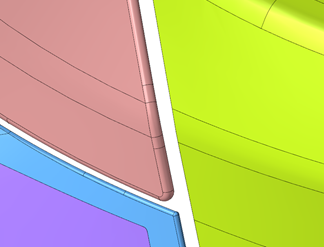
- Non-stamped parts (mirrors, plastic parts, and so on)
- Manually extract wetted faces
- For some complex parts, you might have to trim some surfaces
in order to extract clean wetted faces
Figure 2. 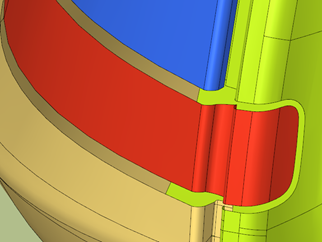
- Stamped parts (parts with continuous thickness – doors, hood, cabin
floor, and so on)
- Generate facets/mesh on exterior surfaces:
- Generate faceted mesh on extracted wetted faces (use rigid body mesher – maximum size 20 mm, minimum size 0.1 mm, maximum deviation 0.1 mm)
- Rigid body mesher captures all fillets and curvature with optimum number of triads
- Make sure generated facets are not deviating much from geometry
Figure 3. 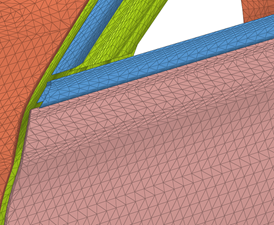
- Cabin floor parts can be meshed with constant size of 8 mm
- Close holes:
- After facet/mesh generation, fill holes using the Fill Hole/Gap utility
- Select all components
- Define maximum width (generally 50 fills up all holes)
Figure 4. 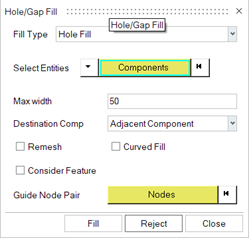
- Fuse gaps:
- Use fuse tool to connect parts with wetted faces
- Upper body parts fuse:
- In the below example, wetted faces are extracted so they have gaps/proximity between them
- The option “Fuse free edges only” is used
- Fuse threshold depends on maximum gap between parts. Generally, it varies between 6-12 mm
- You can select multiple source and target parts for one fuse
operation
Figure 5. 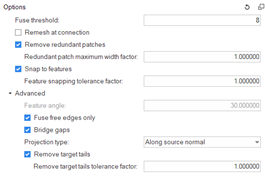
- Fuse cabin floor parts:
- Here parts are either in proximity, overlapping or
intersecting
Figure 6. 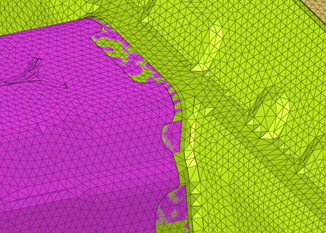
- Deactivate the “Fuse free edges only” option for such parts
- Fuse threshold depends on maximum gap between parts. Generally, it varies between 8 - 10 mm
- Source parts will move to target, so select source and target accordingly
- Here parts are either in proximity, overlapping or
intersecting
- After fusing if there are any bad elements, manually fix them at the end
- Generate apron faces for large openings:
- If there is a big gap between cabin floor and upper body, create apron faces first
- Use Fill Hole/Gap tool > Patch fill > Select surrounding nodes and create patch
- Fuse upper body with cabin floor
- Perform checks for watertight cabin:
- Check for free edges, non-manifold edges
- If free edges are valid, mark the corresponding component with “Baffle” name
- Check and fix normal of the cabin